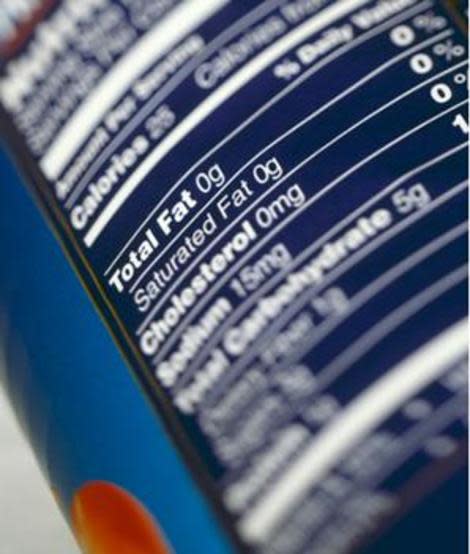Nutrition Labels Turn 20!

By Janet Brill, Ph.D, R.D.
Flipping over soup cans and cereal boxes to scan the nutrition info before buying them (or putting them back on the shelf) may be so routine that it seems you've been doing it forever, but that little box listing calories, fat, and other stats is only a young adult: It's been 20 years since the Food and Drug Administration (FDA) required companies to display the nutrition facts label on packages.
While this is a significant milestone, the label still has a long way to go in my opinion as far as being a really easy way to eyeball exactly what's in the food you put in your mouth. In honor of the nutrition label's birthday, I came up with my top four changes that I would implement to make the rectangular box more helpful.
1. Use Correct Food Form
Is it me or does anyone else have trouble figuring out the calories and serving sizes of popcorn? The FDA only requires the stats for unpopped popcorn (who gnaws down on that?) and leaves it to manufacturers to decide if they want to list the stats for the popped corn. I would make it mandatory that the labels specify everything you need to know about the food in the form that you will be eating it.
RELATED: Another reason to love popcorn: It's one of the six healthy foods you can't overdo.
2. List Realistic Serving Sizes
Do you know anyone who eats a third of a frozen pizza? Most folks eat half-if not the whole thing-but the majority of pies say they serve three. I think the label should list the information for the entire package as well as per reasonable serving for those interested in weight control.
3. Add Color
Printing the nutrients to eat judiciously (calories, saturated fat, trans fat, cholesterol, sodium, sugars, hydrogenated) in red and the good stuff (dietary fiber, vitamin A, calcium, iron, whole grain) in green would help you decide more quickly whether a food was healthier when you comparison shop.
4. Speak English
Instead of a 43-gram chocolate bar, just say a 1.5-ounce bar-a measurement we can comprehend on this side of the pond. And all less-common words should be labeled in parentheses as a term we all understand. For example: dextrose (sugar), high fructose corn syrup (sugar), monosodium glutamate (a source of salt), partially hydrogenated soybean oil (a source of trans fat), cornstarch (a plant starch), sucralose (an artificial sweetener).
RELATED: If you're worried about sugar because of its bad rep, try sweetening recipes with one of the best sugar alternatives instead.
The good news is that the FDA is planning to update the nutrition facts label based on the latest science-based nutrition recommendations. Exactly when this will happen is still a mystery, though, so for the time being, work with what you have and pay attention to serving sizes, calories, and trying to get lots of "good" ingredients into your diet, and you'll make healthier food choices.
More on SHAPE:
50 "Good" Foods that Are Bad for You
6 Superfoods You're Not Eating
The Truth About Intermittent Fasting
